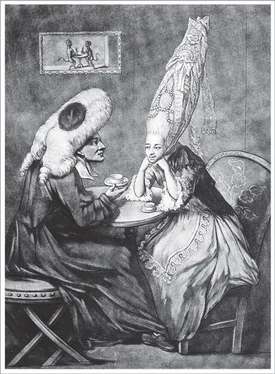Bill Bryson - At Home
Здесь есть возможность читать онлайн «Bill Bryson - At Home» весь текст электронной книги совершенно бесплатно (целиком полную версию без сокращений). В некоторых случаях можно слушать аудио, скачать через торрент в формате fb2 и присутствует краткое содержание. Жанр: Старинная литература, на английском языке. Описание произведения, (предисловие) а так же отзывы посетителей доступны на портале библиотеки ЛибКат.
- Название:At Home
- Автор:
- Жанр:
- Год:неизвестен
- ISBN:нет данных
- Рейтинг книги:4 / 5. Голосов: 1
-
Избранное:Добавить в избранное
- Отзывы:
-
Ваша оценка:
- 80
- 1
- 2
- 3
- 4
- 5
At Home: краткое содержание, описание и аннотация
Предлагаем к чтению аннотацию, описание, краткое содержание или предисловие (зависит от того, что написал сам автор книги «At Home»). Если вы не нашли необходимую информацию о книге — напишите в комментариях, мы постараемся отыскать её.
At Home — читать онлайн бесплатно полную книгу (весь текст) целиком
Ниже представлен текст книги, разбитый по страницам. Система сохранения места последней прочитанной страницы, позволяет с удобством читать онлайн бесплатно книгу «At Home», без необходимости каждый раз заново искать на чём Вы остановились. Поставьте закладку, и сможете в любой момент перейти на страницу, на которой закончили чтение.
Интервал:
Закладка:
The people displaced by Arkwright’s machinery weren’t merely inconvenienced; they were often reduced to the basest desperation. Arkwright evidently saw this coming because he built his first factory like a fortress in a remote corner of Derbyshire—already a remote county—and fortified it with cannons and even a supply of five hundred spears. He cornered the market in the mechanical production of cloth, and in consequence grew fabulously rich, if not loved or especially happy. At his death in 1792, he employed five thousand workers and was worth £500,000—a fabulous sum for any man, but particularly for someone who had spent much of his life as a wigmaker and barber-surgeon.
In fact, the Industrial Revolution hadn’t become truly industrial yet. The man who made it so was the most unexpectedly pivotal figure of his, or almost any other, age: the Reverend Edmund Cartwright (1743–1823). Cartwright came from a well-heeled and locally important Nottinghamshire family and had aspirations to be a poet, but went into the church and was appointed to a rectorship in Leicestershire. A chance conversation with a cloth manufacturer led him to design—absolutely from out of nowhere—the power loom in 1785. Cartwright’s looms transformed the world economy and made Britain truly rich. By the time of the Great Exhibition in 1851, a quarter of a million power looms were in operation in England, and the number grew by an average of 100,000 per decade before peaking at 805,000 in 1913, by which time nearly 3 million were working throughout the world.
Had Cartwright been compensated to anything like the degree his inventions merited, he would have been the richest man of his age—as rich as John D. Rockefeller or Bill Gates in theirs—but in fact he earned nothing directly from his invention at all and actually became indebted through trying to protect and enforce his patents. In 1809, Parliament awarded him a lump payment of £10,000, almost nothing compared with Arkwright’s £500,000, but enough to let him live out his final days in comfort. Meanwhile, he had developed an appetite for invention, and came up with rope-making and wool-combing machines (both very successful) as well as novel types of printing presses, steam engines, roof tiles, and bricks. His last invention, patented shortly before his death in 1823, was for a hand-cranked carriage “to go without horses,” which his patent application confidently declared would allow two men, cranking steadily but without undue exertion, to cover up to twenty-seven miles of ground in a day over even the steepest terrain.
With power looms humming, the cotton industry was ready to take off, but the mills needed far more cotton than existing sources could supply. The obvious place to grow it was the American south. The climate, too hot and dry for many crops, was perfect for cotton. Unfortunately, the only variety that would grow well in most southern soils was a difficult type known as short staple cotton. This was impossible to harvest profitably because each boll was packed with sticky seeds—three pounds of them for every pound of cotton fiber—and these had to be hand-plucked one by one. Separating seeds from fiber was such a labor-intensive operation that even with slave labor it could not be done economically. The costs of feeding and clothing the slaves were far greater than the amount of usable cotton that even the most diligent hand-plucking could produce.
The man who solved the problem grew up a long way from any plantations. His name was Eli Whitney, he came from Westborough, Massachusetts, and, if all the elements of the story are true (which, as we are about to see, they may not be), it was the luckiest of chances that allowed him to make his name immortal.
The story as conventionally told is this: After graduating from Yale in 1793, Whitney accepted a job as a tutor to a family in South Carolina, but upon arriving discovered that the promised salary was to be halved. Offended, he refused the position, which satisfied honor but left him fundless and a long way from home.
While sailing south he had met a vivacious young widow named Catharine Greene, wife of the late General Nathanael Greene, a hero of the American Revolution. A grateful nation had awarded Greene a plantation in Georgia for his support of George Washington through the darkest hours of the war. Unfortunately, Greene, a New Englander, was unused to Georgian heat, and on his first summer there fatally keeled over from sunstroke. It was to Greene’s widow that Whitney turned now.
Mrs. Greene was by this time cohabiting enthusiastically and fairly openly with another Yale man named Phineas Miller, her plantation manager, and they welcomed Whitney into their household. There Whitney was introduced to the cotton seed problem. Examining a boll, he at once thought he could see a solution. He retired to the plantation workshop and devised a simple rotating drum that used nails to snag cotton fiber as it turned, leaving the seeds behind. His new device was so efficient that it could do the work of fifty slaves. Whitney patented his gin (a shortened form of engine ) and prepared to become stupendously wealthy.
That is the story as conventionally told. It appears, however, that a good deal of it may not actually be quite true. The suggestion now is that Whitney already knew Miller—their Yale connection does seem improbably coincidental otherwise—that he was acquainted with the problems of growing cotton on American soil, and that he traveled south, probably at Miller’s behest, knowing that he would try to invent a gin. Moreover, it appears that the work may not have been done in a couple of hours on the plantation, but over weeks or months in a workshop back in Westborough.
Whatever the actuality of its invention, the gin truly was a marvel. Whitney and Miller formed a partnership with every expectation of getting rich, but they were disastrous businessmen. For the use of their machine, they demanded a one-third share of any harvest—a proportion that plantation owners and southern legislators alike saw as frankly rapacious. That Whitney and Miller were both Yankees didn’t help sentiment either. They stubbornly refused to modify their demands, convinced that southern growers could not hold out in the face of such a transforming piece of technology. They were right about the irresistibility, but they failed to note that the gin was also easily pirated. Any halfway decent carpenter could knock one out in a couple of hours. Soon plantation owners across the South were harvesting cotton with homemade gins. Whitney and Miller filed sixty suits in Georgia alone and many others elsewhere, but found little sympathy in southern courts. By 1800—just seven years after the gin’s invention—Miller and Catharine Greene were in such desperate straits that they had to sell the plantation.
The South, however, was growing very rich. Cotton was soon the most traded commodity in the world, and two-thirds of all that cotton came from there. American cotton exports went from almost nothing before the invention of the cotton gin to a staggering two billion pounds by the outbreak of the Civil War. At its peak, Britain took 84 percent of it all.
Before cotton, slavery had been in decline in the United States, but now there was a great need for labor because picking cotton remained extremely labor-intensive. At the time of Whitney’s invention slavery existed in just six states; by the outbreak of the Civil War it was legal in fifteen. Worse, the northern slave states like Virginia and Maryland, where cotton couldn’t be successfully grown, turned to exporting slaves to their southern neighbors, thus breaking up families and intensifying the suffering for tens of thousands. Between 1793 and the outbreak of the Civil War, over eight hundred thousand slaves were shipped south.
Читать дальшеИнтервал:
Закладка:
Похожие книги на «At Home»
Представляем Вашему вниманию похожие книги на «At Home» списком для выбора. Мы отобрали схожую по названию и смыслу литературу в надежде предоставить читателям больше вариантов отыскать новые, интересные, ещё непрочитанные произведения.
Обсуждение, отзывы о книге «At Home» и просто собственные мнения читателей. Оставьте ваши комментарии, напишите, что Вы думаете о произведении, его смысле или главных героях. Укажите что конкретно понравилось, а что нет, и почему Вы так считаете.












